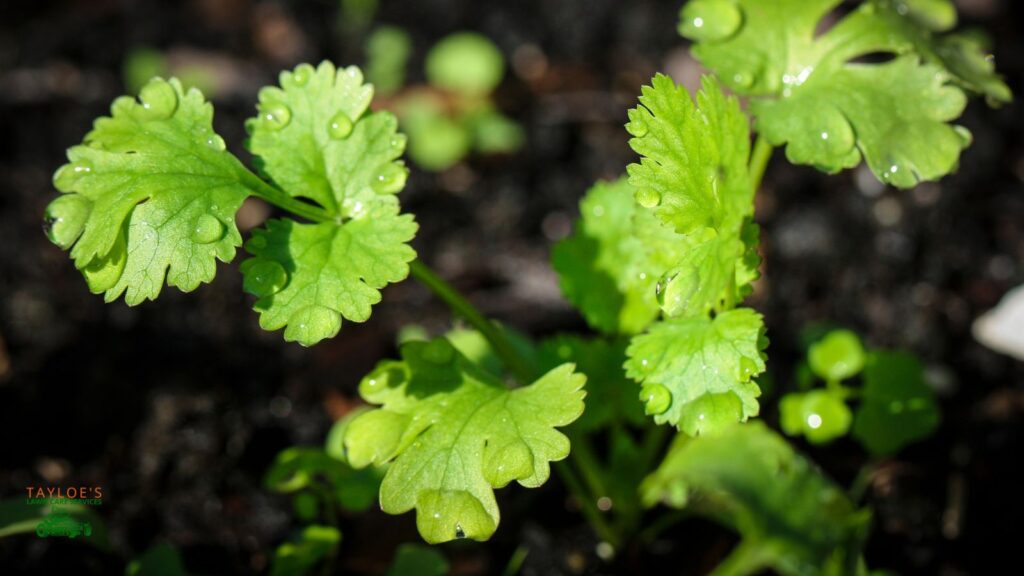Last Updated on: 29th January 2024, 02:06 pm
The leaves are cilantro, the seeds coriander–both are so delicious!
Cilantro (Latin: Coriandrum sativum), aka coriander, is a versatile annual herb with glossy, broad, flat leaves that resemble parsley. Perhaps the most significant physical difference between the two is that parsley leaves have pointy serrations, but cilantro leaf serration appears more rounded and lacy-looking.
Cilantro originally came from Northern Africa, the Mediterranean zone of Europe, and the southwestern region of Asia. Most Americans quickly recognize it as a familiar flavor in delicious Latin foods.
The herb thrives well in your in-ground garden but also does amazingly in pots or containers, which must be deep enough to accommodate its deep taproot. It is self-sufficient to a large extent, needing only minimal help from you.
It is tolerant of many climates and will work well in USDA plant hardiness zones 3 through 11.
Cilantro Growing Needs
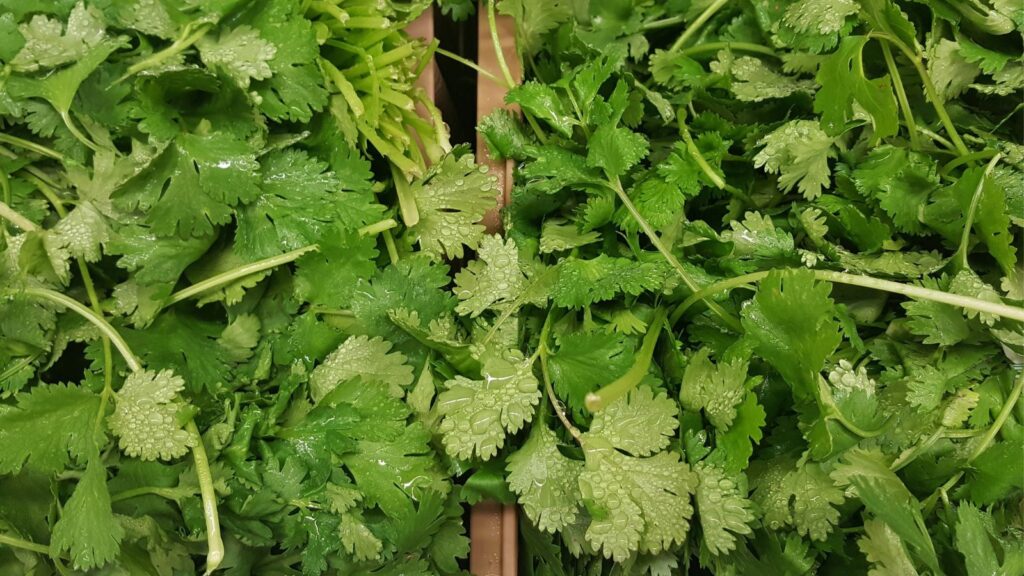
Light
Cilantro prefers full sunshine but can tolerate light shade, especially in hot climates. Grow this herb where it will receive early morning sun instead of the late afternoon sun. Afternoon shade will prevent it from withering.
Soil
The soil should drain thoroughly after a rainshower, with a neutral pH of 6.2 to 6.8. You can amend the soil by mixing aged compost or another rich organic matter.
Consider investing in a premium potting mix should you decide to grow the herb in a planter or container. It’s more aerated compared to denser garden soil.
Temperature
Moderate temperatures, preferably around 70°F, will extend cilantro’s life span. Anything hotter (say over 80° F) will quickly trigger the herb into bolting. Thus, it cuts short your production and harvest.
Cilantro Growing Tips (It Works for Container Gardening or In-Ground)
- Plant your cilantro in the cooler seasons, fall or spring. Avoid planting it in the summer, as the hot temperatures can trigger premature flowering and send the plant into seeding (called bolting). Plus, it can make the leaves bitter.
- Grow from seed and directly where you plan to leave it. This practice avoids stressing the plant, which can lead to bolting. Also, cilantro grows elongated tap roots which those little plastic seedling pots may be unable to accommodate. If you are a container gardener, ensure you choose a pot with ample depth. Cilantro is not fond of transplantation, so this is the best option.
- Prepare the seeds for planting by soaking them in water for 24–48 hours. Then remove them from the water, allowing them to dry completely. Soaking helps improve the seeds’ chances of germinating.
- Sow the seeds two inches apart and cover them with ¼ inch layer of soil. Wait until your cilantro plants reach two inches tall, then thin to a spacing of three or four inches. The seemingly crowded growing conditions of cilantro help ensure that the leaves give the much-needed shade to the roots, preventing the plant from bolting in hot weather.
- Consider planting new seeds every six weeks for an abundant supply of cilantro throughout the growing season.
- If you’re transplanting the herb into your garden, make holes three or four inches apart. Water thoroughly after transplanting.
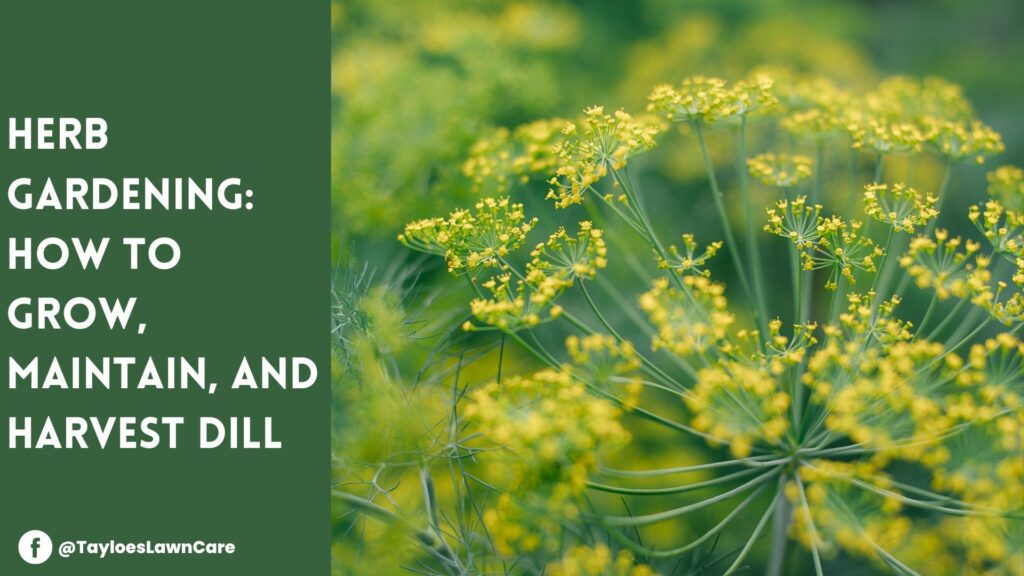
Cilantro Care Tips
Here are the tips you need to help your cilantro grow into abundance.
Avoid over-watering
Just water enough to keep the soil moist. It needs only about an inch of water per week. Regularly check the soil and water it when it appears dry.
Fertilizing needs
Fertilize with water-soluble fertilizer about once a month to boost foliage development. Stop fertilizer application once the plant flowers and begin to set seeds.
Conversely, You can also use organic fertilizer or add well-rotted manure/compost into the soil before planting. This option is excellent if you intend to grow your cilantro organically.
Pruning your plants
Pruning helps encourage new growth by delaying the seeding process and, thus, prolonging your harvest time. Also, when grown out, cilantro’s leaves tend to be bitter, making it less desirable.
Begin trimming off the stems once the plant is six inches tall — roughly 60–75 days old after planting.
You can either pinch them or use sharp, sanitized scissors to remove the stems. Just ensure that you don’t cut into the newly emerging growth.
Harvesting the herbs
Harvest the leaves using the same method described above in the pruning section. By around the sixtieth day after planting, trim your cilantro leaves and use them when fresh.
Hold a stem by its outermost (or extreme) leaves using your thumb and forefinger. Trace downwards where there is new growth coming up. You do not want to damage the herb, so pinch only a bit above the emerging growth — to take off the leaves and the stem above it.
Avoid pulling off the stem, as this can damage the entire plant.
The secret to a prolonged harvesting cycle is to begin pruning early and do it often; to encourage new growth. Once the herb begins to flower and produce seeds (which you likely know as coriander seeds), the leaves lose their bright flavor.
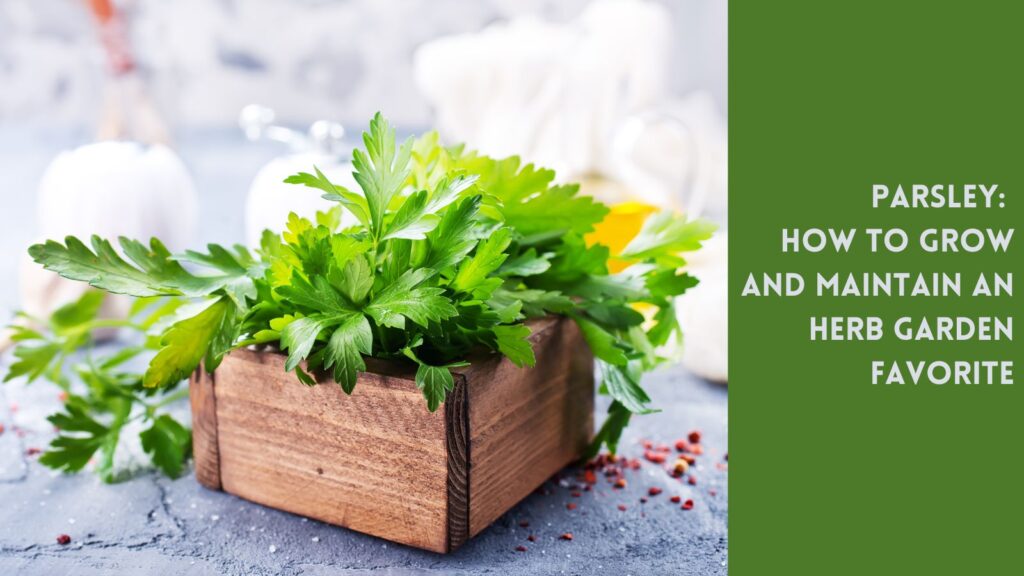
Challenges When Growing Cilantro
Here are the two main things to watch out for–they can harm your herbs.
Powdery mildew
As the name implies, this disease is a powdery white coating that you’ll most likely spot on the foliage during hot, dry periods.
Offering the plants sufficient moisture and not overcrowding them is an effective way to prevent powdery mildew.
A one-inch layer of mulch around the herbs will help to boost and retain the moisture content of the soil.
Leaf spot
It’s usually a result of poor air circulation and excessive moisture.
In the beginning, the spots will appear yellow and petite, then turn into large brown spots.
To prevent leaf spots, ensure the soil is well-drained. Thin out the plants (enough) to encourage good air circulation. Also, avoid over-watering.
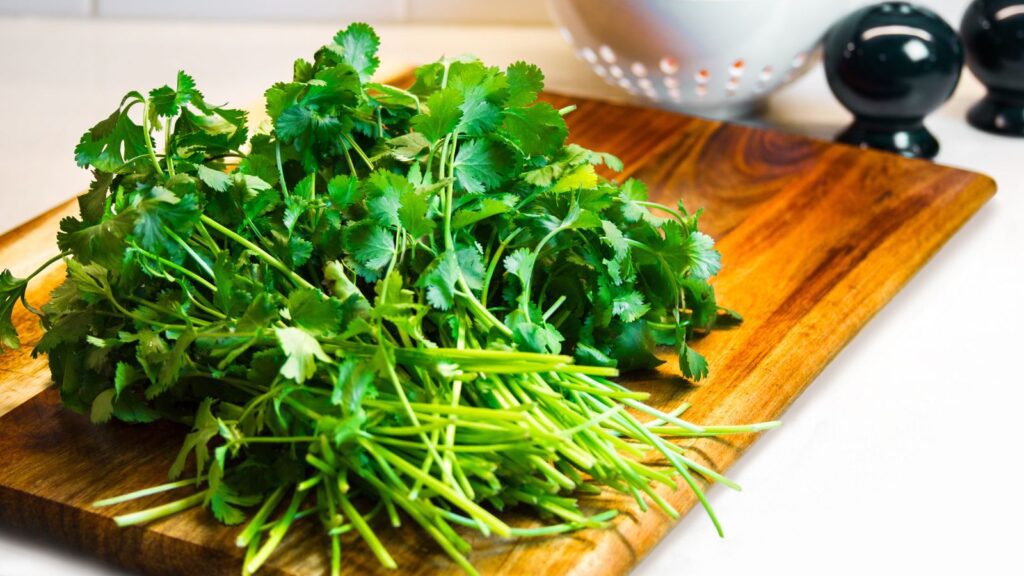
The Takeaway on Growing Fresh Cilantro in Your Garden
Cilantro is an excellent herb with scrumptious leaves commonly used in Latin, North African, and Mediterranean cuisines. Why buy it at the store when you can grow your own herbs at home so easily? Give it a try!
Author Profile

- Deborah Tayloe is the CEO and co-founder of Tayloe's Lawn Care Services, LLC. She has a B.S.Ed and holds certificates in soil and water management and herbology from accredited programs.
Latest entries
 GardeningSeptember 27, 2025What perennials, shrubs, and trees don’t like fall pruning (and why)?
GardeningSeptember 27, 2025What perennials, shrubs, and trees don’t like fall pruning (and why)? Trees and ShrubsSeptember 14, 2025Fall Shrub Pruning Guide (September–October)
Trees and ShrubsSeptember 14, 2025Fall Shrub Pruning Guide (September–October) Trees and ShrubsApril 22, 2025Boxwood Blight: Early identification and isolation
Trees and ShrubsApril 22, 2025Boxwood Blight: Early identification and isolation Flower GardenApril 8, 2025John F. Kennedy Rose: Hybrid tea rose with elegant white blooms
Flower GardenApril 8, 2025John F. Kennedy Rose: Hybrid tea rose with elegant white blooms

